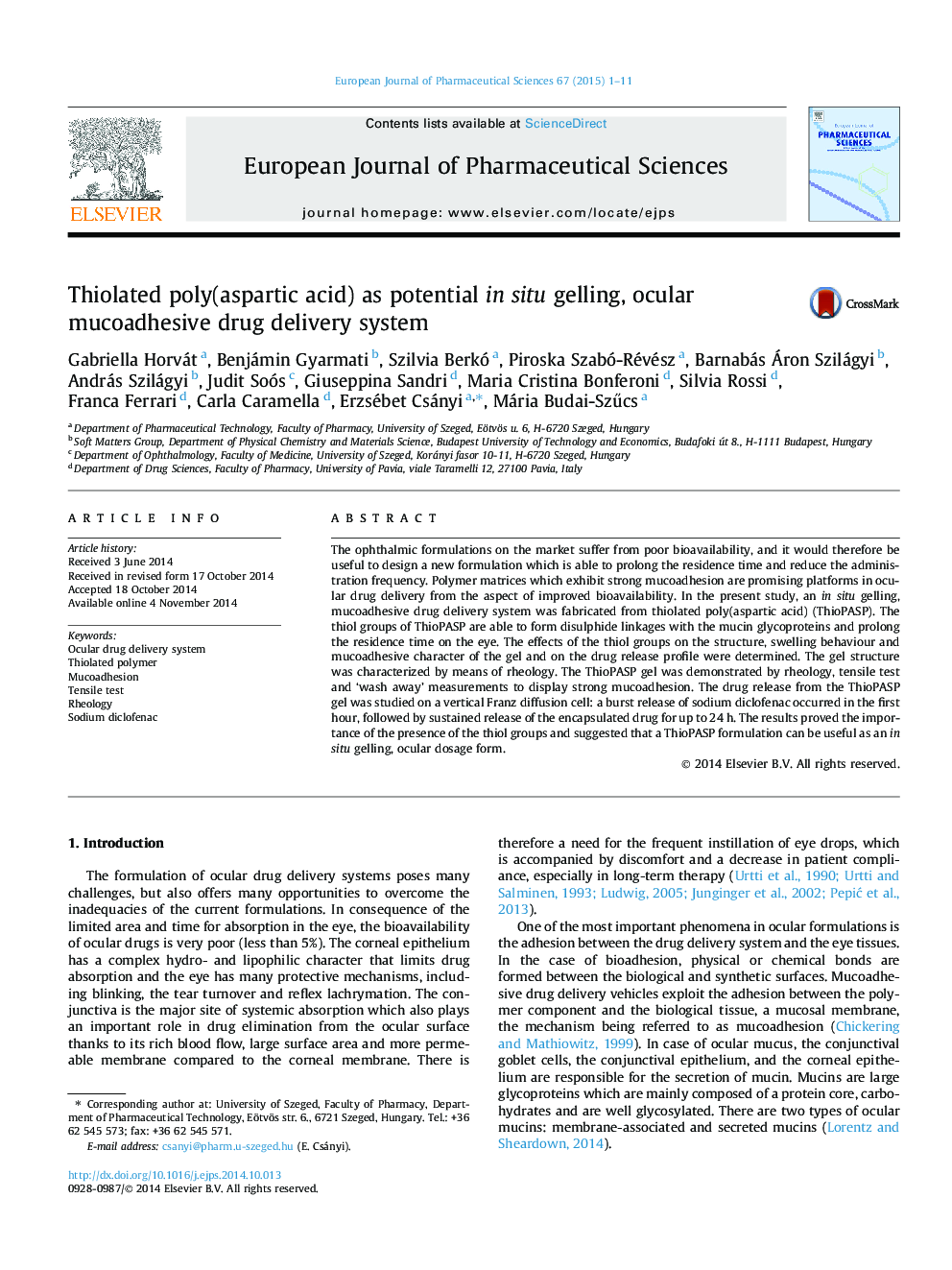| Article ID | Journal | Published Year | Pages | File Type |
|---|---|---|---|---|
| 5809864 | European Journal of Pharmaceutical Sciences | 2015 | 11 Pages |
The ophthalmic formulations on the market suffer from poor bioavailability, and it would therefore be useful to design a new formulation which is able to prolong the residence time and reduce the administration frequency. Polymer matrices which exhibit strong mucoadhesion are promising platforms in ocular drug delivery from the aspect of improved bioavailability. In the present study, an in situ gelling, mucoadhesive drug delivery system was fabricated from thiolated poly(aspartic acid) (ThioPASP). The thiol groups of ThioPASP are able to form disulphide linkages with the mucin glycoproteins and prolong the residence time on the eye. The effects of the thiol groups on the structure, swelling behaviour and mucoadhesive character of the gel and on the drug release profile were determined. The gel structure was characterized by means of rheology. The ThioPASP gel was demonstrated by rheology, tensile test and 'wash away' measurements to display strong mucoadhesion. The drug release from the ThioPASP gel was studied on a vertical Franz diffusion cell: a burst release of sodium diclofenac occurred in the first hour, followed by sustained release of the encapsulated drug for up to 24Â h. The results proved the importance of the presence of the thiol groups and suggested that a ThioPASP formulation can be useful as an in situ gelling, ocular dosage form.
Graphical abstractDownload high-res image (61KB)Download full-size image
